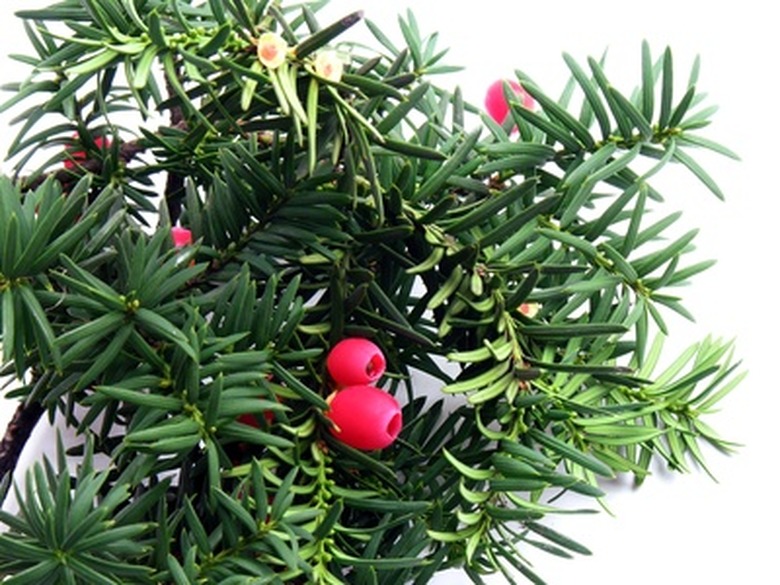Privacy Trees That Grow In The Shade
Planting evergreen trees is a way to hide an unattractive view or designate a border in the landscape. They can be planted closely together to form a screen or hedge or planted as single specimens. Most evergreen trees need full sun exposure for the best performance, but some evergreen trees perform well as privacy screens in full to part shade.
Common Yew
The common yew or English yew (Taxus baccata L.) grows slowly to 45 feet tall and 20 feet wide and is suitable for a full-sun to full-shade location. It has thin leaves that grow thickly from the bottom of the tree to the top. It has a pyramidal shape but can be trimmed or sheared to a suitable shape. The common yew is an attractive plant for a privacy screen, although the leaves are poisonous if consumed. The common yew is appropriate for planting in U.S. Department of Agriculture Horticultural Zones 7 through 10.
- Planting evergreen trees is a way to hide an unattractive view or designate a border in the landscape.
- The common yew or English yew (Taxus baccata L.) grows slowly to 45 feet tall and 20 feet wide and is suitable for a full-sun to full-shade location.
American Holly
American holly (Ilex opaca) is a slow-growing shade-tolerant evergreen. It grows to 40 feet tall and spreads as much as 15 feet at maturity. The female American holly produces attractive red berries in the fall if there is a male plant in the vicinity. One male plant will pollinate as many as five female American holly trees. The leaves have sharp spines and the plants are impenetrable if planted in a tight hedge. The American holly grows best in the moist, acidic soils of the Southeastern U.S. The American holly is appropriate for planting in USDA Horticultural Zones 5 through 9.
- American holly (Ilex opaca) is a slow-growing shade-tolerant evergreen.
- One male plant will pollinate as many as five female American holly trees.
Canadian Hemlock
The Canadian hemlock (Tsuga canadensis) grows in shade in USDA Horticultural Zones 3 through 8. It suffers from mildew and disease problems in hot, humid conditions. For a thick hedge, plant Canadian hemlock trees 2 feet apart. Canadian hemlocks can be sheared to form an attractive privacy screen. If left to grow without pruning, Canadian hemlock trees can grow to 40 feet tall and 20 feet wide.
Arborvitae
The arborvitae (Thuja occidentalis) grows to 15 feet high or more with a spread of 4 feet. It has an attractive pyramidal shape and does not need pruning if left to grow in its natural shape. If shearing the arborvitae to a particular shape, shear two or three times during the growing season to prevent a woody appearance. It is a dependable evergreen for a privacy screen in USDA Horticultural zones 3 through 8.
- The Canadian hemlock (Tsuga canadensis) grows in shade in USDA Horticultural Zones 3 through 8.
- If left to grow without pruning, Canadian hemlock trees can grow to 40 feet tall and 20 feet wide.
